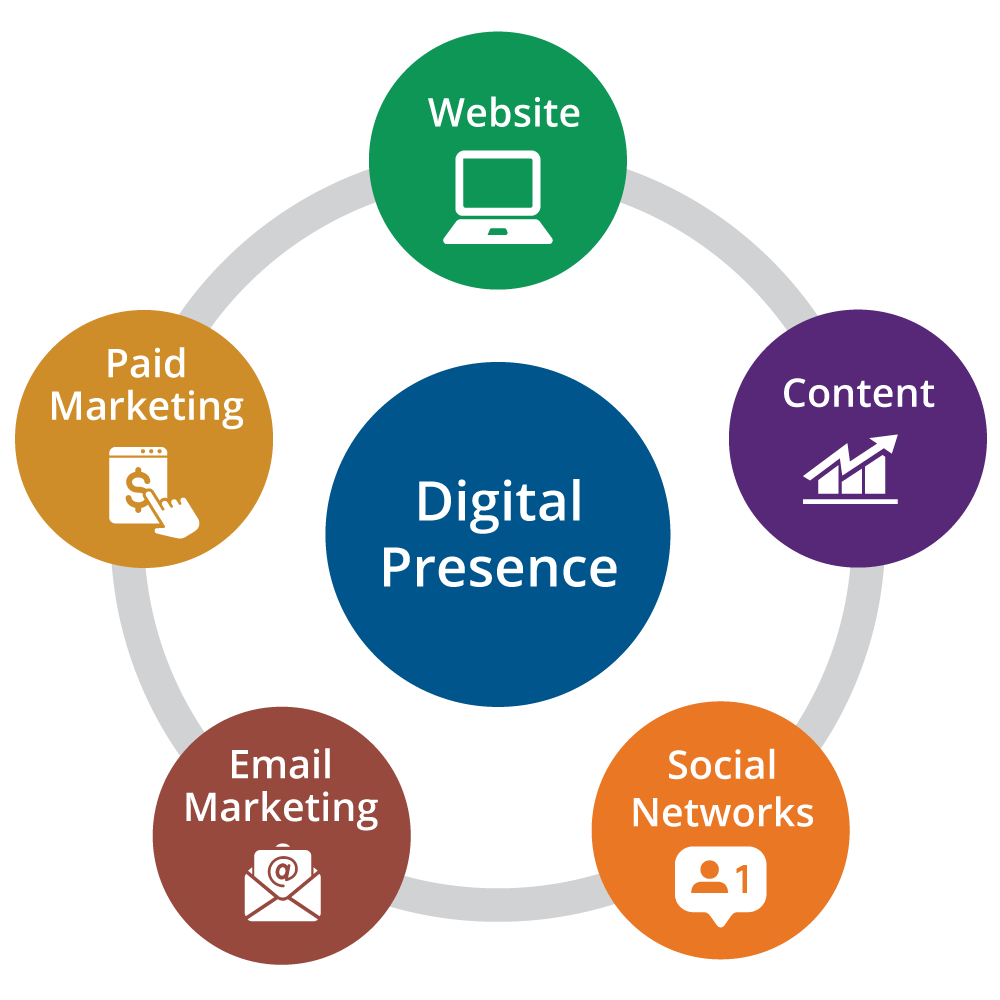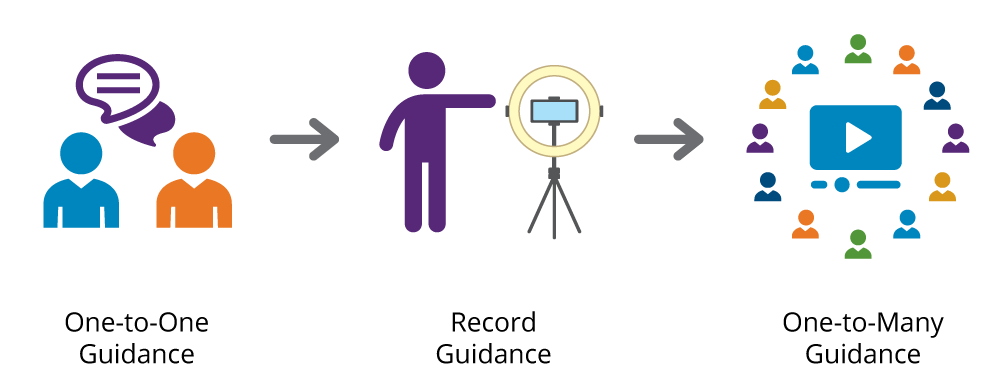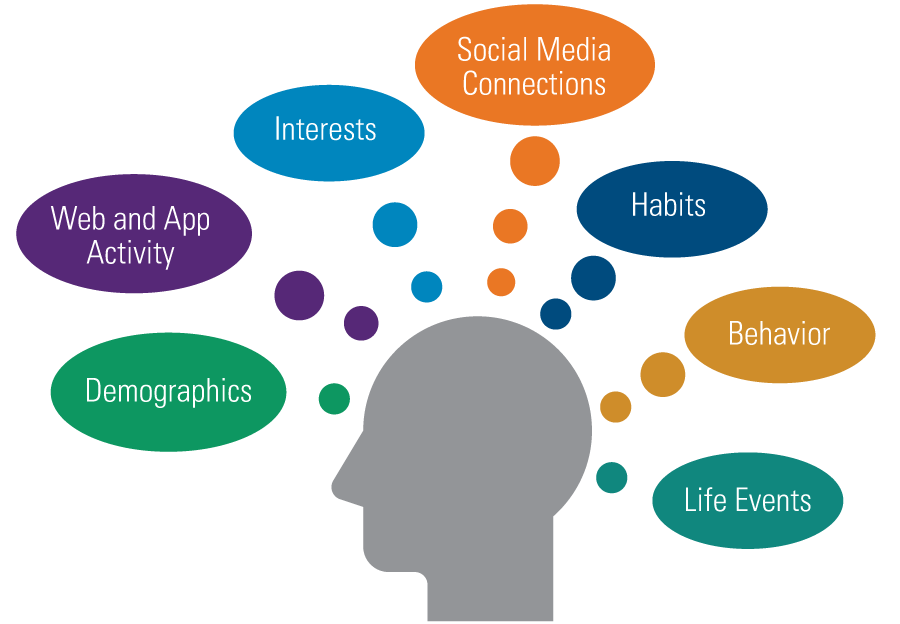Today, almost everyone is online trying to learn, research, buy, or just be entertained. Yet many financial professionals are still in the process of building their digital presence. Now’s a great time to begin building yours. Why? Useful, relevant online content that’s promoted effectively attracts visitors—some of which can be converted into clients. Plus, a strong digital presence can improve the online experience of your current clients, which can lead to better retention. This workbook will guide your efforts in five areas of building your digital presence:
- Website A professional and user-friendly website can help establish credibility and educate prospects on the services you offer.
- Content High-quality content can help position you as a thought leader, making you more magnetic for new business opportunities.
- Social networks Social media platforms such as LinkedIn, Facebook, and Twitter can be used to share industry news, your professional insights, and promotional content.
- Email marketing Regular newsletters can be used to educate and inform clients on market trends, investment strategies, and updates on you and your team.
- Paid marketing Paid advertising on platforms like Google Ads, LinkedIn, and Facebook can help drive traffic to your website and increase brand awareness.
By implementing these strategies and leveraging the power of digital marketing, you can increase your visibility, attract new clients and ultimately grow your business.


 |
Website |
Your website is the foundation of your digital presence, so it’s important to make sure it accurately reflects your brand image and appeals to your target audience. Consider the following best practices:
Homepage First Impression: Your homepage should reflect your brand image. Make sure it’s visually appealing and focused on your target audience or niche. Include local or niche images and a clear call-to-action.
Assess your homepage’s clarity. Compare your site with some leading brands, such as Apple, Honda, Adobe, Visa, and Chick-fil-A. What do these sites have in common? Their design is simple, and their message is clear. Yours should be too.
Team Profile: Highlight your team by showcasing professional and personal bios, photos, and links to social-media accounts
Services Overview: Present an easily accessible overview of your wealth-management process, including client experience and communication commitments. Consider adding a video description of your services.
Client Profile: Detail your niche, client requirements, and exceptions to your niche
Branding: Ensure your website has a clear, high-resolution logo, consistent font, color, and imagery matching your company’s brand
Mobile and Cross-Browser Compatibility: Ensure your website is optimized for mobile devices and works across different browsers with quick page-loading times and accessible design
Navigation: Keep navigation simple and easily accessible with clear and meaningful titles
Call-to-Action: Place a prominent call-to-action with a lead-capture mechanism, such as an e-book or white paper. Measure conversion rates with analytics, e.g., how many visitors enter their email to get your e-book.
Contact Information: Provide easily accessible business information, including address, phone numbers, email addresses, social-media links, and office hours. Consider adding an area map and premises images to make finding your office easy.
Automatic Calendaring: Incorporate an automatic calendaring system for booking appointments or consultations directly from your website, making it easier for clients to schedule time with you and freeing up your time from manual scheduling tasks
Wondering what activities you can do yourself and which ones you should outsource? See the suggestions below:
Your Role:
- Add new videos and articles weekly
- Respond to contact forms
- Review monthly metrics on Google Analytics
Outsource:
- Website design
- SEO optimization
- Site maintenance
- Professional photography/video
 |
Content |
The Content you create demonstrates thought leadership, making you more magnetic for attracting prospects. There are three content types to consider, but begin with one:

Videos
Create short videos that display your knowledge and expertise while also showing your human side

Articles
Write short, powerful articles to share your insights and experiences with a wider audience

Podcasts
Reach new audiences and build connections by providing valuable information in an easy-to-consume format
When using these content media, commit to a series. This type of “cornerstone content” should be your focus and get the most effort in distributing it online. Consider evergreen, personal-finance topics (e.g., saving for college), not time-sensitive market updates. Why? Evergreen content provides value well beyond its release date.
When naming your series, consider a catchy name that reflects your brand and the content you cover. For example, Mike’s Money Minute, The Wealth Whisperer, or Retirement Ready.
Cornerstone content should be shared in many ways across different platforms, between your social networks, your website, and your newsletter. It can reach a wide, but still targeted audience. If you’re curious about what parts you should do yourself and what parts you should outsource:
Your Everyday Client Conversations Are Great Sources for Content

Content ideas don’t come from thin air. They come from everyday conversations you have with clients and prospects. For example, let’s say you give a client advice on charitable giving. Record that same advice in a 60 second video and many others can benefit. Digital marketing gives you scalability, going from a one-to-one conversation to a one-to-many approach.
Your Role:
- Plan your content in advance
- Script and practice
- Serve as the “talent” in your video or podcast
Outsource:
- Podcast or video editing
- Content distribution
 |
Social Networks |
Social media offers an inexpensive and scalable way to reach ideal clients, prospects, and COIs. From the comfort of your office, you can showcase your professionalism, smarts, and client focus to your community. While there are a wide variety of social platforms from which to choose, we think Facebook, LinkedIn, and Twitter are optimal choices: Here’s why:
Facebook:
- It’s the world’s largest and most active social network
- Brand yourself as a financial professional who deeply cares about your clients
- Build client relationships by staying informed about their lives
LinkedIn:
- Search for potential clients and find pathways to introductions
- Showcase thought leadership and expertise
- Build and engage a network of current and potential clients
Twitter:
- Stay up-to-date on the latest industry trends and developments
- Use this fast-paced platform to engage with key contacts in real-time
- Position yourself as current and tech-savvy
Ideally, content for these networks is a blend of personal and business. Even on a business network such as LinkedIn, you’ll notice that more-personal posts tend to outperform business-focused posts. Consider using the following post types below as you plan your monthly content.
| Types of Posts | Description |
|---|---|
| Quote Cards | Graphics with quotes from team members including their photo |
| Info Cards | Graphics emphasizing a key tip or takeaway |
| Stat Cards | Graphics highlighting an important statistic, possibly with an infographic. |
| Holiday Posts | Graphics to acknowledge important holidays |
| Video Clips | 20-30 second teaser from a video highlighting a key point |
| Employee Updates | Announcements of team-member accomplishments, promotions, etc. |
| Culture Posts | An image or article that highlights the culture within your firm |
| Accomplishments | Your awards, press, and more |
| Partnership Posts | A post highlighting a recent partnership with a new client, vendor, etc. |
| Event Announcements | A post announcing an upcoming webinar, in-person event, etc. |
| Event Snapshots | Photos taken at your events (philanthropic, corporate, etc.) |
| Articles | Educational articles for each business unit |
Your Role:
- Contribute post ideas based on real-life experiences
- Actively comment and like other people’s posts
- Stay current on the latest trends on social networks
Outsource:
- Graphic design
- Social-media strategy, scheduling, and posting
 |
Email Marketing |
With social networks, you can be at the mercy of algorithms regarding who sees your posts. When emailing your practice newsletter, you have greater control because you own your email list. As your email list grows, your impact grows.
The most effective newsletters aren’t the boilerplate, all-financial type. Instead, create a more personal newsletter that people will enjoy reading. If you want to start a newsletter or perhaps revamp an existing one, here are a few things to keep in mind:
Practice Newsletter Tips
Double down on hand-crafted content
Your articles, podcasts, and videos are the stars of your newsletter. Ideal clients aren’t interested in templated financial newsletters. If they know you and like you, they’ll take time to read content that you had a hand in creating.
Highlight the people closest to your brand
The easiest way to personalize is to include photos and mentions of the people closest to your brand. Are you and your team appearing on video or in photos? Is there a team member you could highlight? Could you showcase a center of influence (COI) to show how they can also help clients? Every little bit of personalization helps.
Send it once a month
It’s better to send one newsletter each month that’s filled with great content than two newsletters per month that are mediocre. The quality of each newsletter determines whether the next newsletter gets opened.
Your design matters
The layout, fonts, and graphics create a perception. The perception you want is current, professional, and in no way “behind the times.” Be sure to test your newsletter on desktop and mobile before launch.
Your email subject line is very important
Most people get dozens, if not hundreds, of emails a day and make snap decisions on which they’ll open. Test different subject lines to improve your open rates. You could test two subject lines on two small subsets of your audience. Then, the subject line receiving the highest open rate gets distributed to the rest of your email list.
Focus on gaining subscribers
You probably already have an email list. Let’s crank it up a notch. Encourage your clients, prospects, and COIs to sign up. Have a prominent newsletter signup on your website. Promote your newsletter on your social channels. One subscriber at a time, it adds up.
Highlight Your People in Your Newsletter

In your practice newsletter, highlight You, your teammates, your COIs, and your clients:
- Birthdays
- Weddings
- Accomplishments
- Special recognition
- Charitable involvement
- Family traditions
Your Role:
- Create content that can be leveraged in the newsletter
- Personalize the text to showcase your involvement. Don’t make your text “all business.”
- Show up in the photos and videos
Outsource:
- Template design creation
- Copy editing
- Sending and tracking
 |
Paid Marketing |
The reality is that social networks only spread your posts so far for free. Paid marketing is necessary to scale your digital presence. Fortunately, paid marketing is a cost-effective way to reach a targeted potential audience.
With LinkedIn and Facebook, you’re essentially paying for an ad to be shown to users based on these sites’ targeting capabilities. With paid search, e.g. Google, you can purchase investment or planning-related search terms that can help lead people to your website. The number of users you reach depends on your objectives and your budget.
Possible ad strategies
- Raise awareness of your practice and capabilities
- Promote an upcoming webinar or recorded course
- Encourage people to follow your Facebook page
- Showcase your video or podcast
- Offer free consultations through a request form
- Give an article teaser that drives traffic to your website
Targeting
- Do you have an ideal client profile? You can likely get your social posts in front of your target profile with paid social. It’s possible to target an audience using:
- Demographics
- Location
- Occupation
- Interests
With the right combination of messaging, creative approach, and targeting, paid marketing can help you in measurable ways. Whether it’s in raising awareness in your community, driving more traffic to your website, or building your email list, the results are worth pursuing.
Your Role:
- Determine how much you’re willing to spend on paid marketing
- Create a variety of social media post types ideas
- Determine your goals for paid marketing
Outsource:
- Social Media automation that schedules and promotes your content over long periods of time
- Identifying your best posts to promote with paid marketing
- Choosing which paid marketing platforms to use, e.g. Google, Facebook, LinkedIn
Get Your Content in Front of Your Ideal Prospect or Client

Paid marketing on Facebook is based on finding the audiences that are most likely to become clients. These targeting options focus directly on users and profiling potential customers in order to get clicks and grow your business.
Facebook can automatically show your ads to people who are most likely to find your ads relevant. And you can further target your ads using criteria such as demographics, interests, behaviors, social media connections, and more.
To Summarize
Building your digital presence happens one step at a time. Start with your website, then move on to content, social networks, and newsletters. When you’re ready to scale, consider paid advertising as it’s cost-effective, repeatable, and measurable. Gradually, you’ll develop a digital competitive advantage that brings visitors to your website, many of whom may become clients.
Getting Help to Build Your Digital Presence
There are likely aspects of digital presence that you should outsource, but not everything. You want your face to be seen and your voice to be heard, but you don’t need to be the one who edits your videos or comes up with creative ad concepts. Find a digital-marketing firm to help. Look for one that’s:
- Experienced and reputable
- Focused on financial professionals
- Seems to have reasonable terms and pricing
- Happy to share examples and case studies
If you haven’t taken our Evaluating Your Digital Presence quiz, click below.
If you have, use your quiz results to choose an area to improve and begin implementing the suggestions on this webpage.
Check out our other digital presence resources:
Evaluating, Building, and Growing Your Digital Presence
- Financial professionals should comply with their own firm’s policy and industry rules
- Financial professionals should always consult their compliance department and individual firm policies before accessing any social media or using online communication tools for a business purpose
- All communications with the public should be compliance-approved and aligned with your firm’s guidelines
Hartford Funds partnered with Oechsli to bring you this content. Oechsli conducts semi-annual research on two critical groups: elite financial professionals and affluent investors. The purpose behind each research project is to help financial professionals, from individual professionals to executives, make better decisions about attracting, servicing, and developing loyal affluent clients.
Hartford Mutual Funds may or may not be invested in the companies referenced herein; however, no particular endorsement of any product or service is being made.
Oechsli is not an affiliate or subsidiary of Hartford Funds





